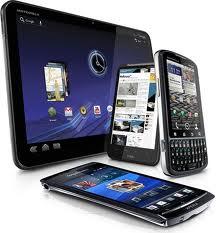

Today, the integration of digital technology is going one step further by allowing, and in some cases mandating, employees to use their own cell phones, tablets or laptops in the workplace instead of devices purchased by a company. Commonly known as “bring your own device” (BYOD), this practice lets employees work from anywhere that is convenient such as at home, the office, the library or even a local coffee shop.
Unfortunately, while this type of policy is cost-efficient for many, it does bring up the issue of privacy and security. This is why more businesses are turning mobile device management (MDM) to not only maintain and secure company data, but to construct optimal customer relationships as well.
Understanding MDM
MDM is a strategy that uses software to manage, monitor, secure and support mobile devices used by employees. The devices are linked to various mobile service providers and across multiple operating systems used within a company. MDM software is usually combined with end-to-end security tools and services to create an enterprise mobility management (EMM) solution.
Gartner, Inc., a technology research company, defines MDM as a set or range of services and products that help organizations to support business or corporate applications and software on laptops, tablets or smartphones. These devices are normally owned by the employee and are for personal use. MDM sets and enforces policies and sets a certain level of IT control over various platforms.
Most MDM software contains at least some of these features:
- Inventory management
- Security management
- Management and support of mobile applications
- Mobile policy management
- Telecom service management
The main components of an MDM program are:
- Cloud-based
- Enforcement of passwords and blacklists
- Remote monitoring
- Logging and reporting problems for compliance purposes
- Ability to disconnect or disable unauthorized devices from remote location
Why BYOD Requires MDM
Most companies that have a BYOD policy in place need an MDM solution to keep threats of security attacks such as keyloggers, phishers, Trojans and malicious apps at bay. MDM also helps establish protocols regarding personal devices in the workplace. These include guidelines for acceptable use, how to avoid dangerous activities and understanding dangerous applications.
Many businesses, though, are only learning about BYOD and the importance of having a good, yet affordable, MDM strategy in place. To date, BlackBerry is the only communications provider to offer a fully integrated MDM software. The BlackBerry Enterprise Server 10 offers users multi-OS device, app and security management, as well as flexible levels of security. It also can separate work and personal content for data leak prevention.